
Fast, affordable Internet access for all.

Ottawa County, Michigan officials say they’ve struck a new public private partnership (PPP) with 123Net on a $25 million fiber deployment that aims to bring more uniform – and affordable – broadband access to Michigan’s seventh largest county by population.
The Ottawa County Board of Commissioners voted last month to approve a master agreement and letter of intent with 123Net.
The finalized agreement calls for 123Net to spend two years deploying 400 miles of new fiber infrastructure as part of an open access, carrier neutral fiber network to bring new competition – and affordable fiber – to 10,000 county residents and businesses.
The $25 million network will be funded by $14 million from Michigan’s Realizing Opportunity with Broadband Infrastructure Networks (ROBIN) grant program; $7.5 million from Ottawa County’s American Rescue Plan Act funds, and $3.5 million in private funding from 123NET.
“We’re at an interesting time in broadband deployment as there are a number of unique funding programs that counties and municipalities can access,” said Chuck Irvin, Executive Vice President of 123NET, said in a statement. “123NET is proud to be part of this exciting project.”
At the same time, county officials say they’ve struck a separate deal with Tilson Technology to build new wireless towers to deliver fixed wireless service to an undetermined number of rural county residents for whom deploying fiber is cost prohibitive.
Colorado has long been home to some of the most innovative municipal broadband projects in the country. That trend has only accelerated with last year’s voter-approved elimination of municipal broadband restrictions, and it’s now being buoyed by a massive new wave of state grants that should further expand affordable broadband to long-neglected parts of the state.
Colorado Gov. Jared Polis recently announced the first of multiple broadband investments using stimulus funding from the U.S. Treasury’s Capital Projects Fund (CPF) program. The CPF is funded by $10 billion made possible by the American Rescue Plan Act (ARPA), and is a key part of the state’s goal to bring affordable broadband to 99 percent of Colorado residents by 2027.
According to the Governor’s office, the state just authorized $113 million in CPF funds on 13 projects that will bring fiber service to nearly 19,000 homes and businesses across Colorado. State officials say the funding will be heavily focused on projects in the South and Southwest portion of the Centennial State, where connectivity needs are greatest.
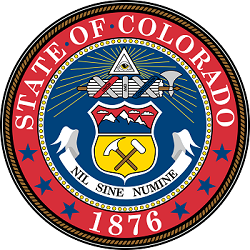
The Colorado Broadband Office says it received 112 applications asking for more than $642 million in broadband funding across the state–five times greater than the allotted awards.
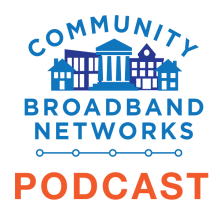
The fading sound of holiday bells and soft stillness that comes with plunging temps can only mean one thing; it's January again, which means it's time to break out the crystal ball and have a conversation about the year to come. Joining Christopher in the recording booth are a slew of CBN staffers new and veteran to join in the collective task of putting words to feelings both foreboding and optimistic about the year to come.
Will we see the first BEAD-connected home this year? Will the Affordabel Connectivity Program get re-funded? How will the maps look in 11 more months, with slews of challenge data? How many new municipal ftth networks will we see founded in 2024? State preemption laws rolled back, or re-introduced? Tune in for answers to all these and more.
This show is 48 minutes long and can be played on this page or via Apple Podcasts or the tool of your choice using this feed.
Transcript below.
We want your feedback and suggestions for the show-please e-mail us or leave a comment below.
Listen to other episodes or view all episodes in our index. See other podcasts from the Institute for Local Self-Reliance.
Thanks to Arne Huseby for the music. The song is Warm Duck Shuffle and is licensed under a Creative Commons Attribution (3.0) license.
Cullman, Alabama-based Cullman Electric Cooperative says it is launching a new phase of fiber deployment after receiving a $7 million grant to bring affordable fiber access to long-neglected Cullman and Winston counties.
The financing was made possible by the Alabama Broadband Accessibility Fund (ABAF), funded by the 2021 American Rescue Plan Act (ARPA). The state has already dedicated more than $82 million in funding for Alabama broadband deployments, bringing broadband access to 72,000 currently unserved residents.
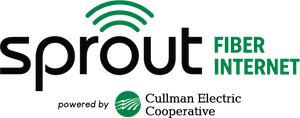
Cullman’s $7 million portion will bring affordable fiber access to 1,300 families. Known as Sprout Fiber Internet, Cullman currently offers residential customers symmetrical 300 Mbps (megabit per second) service for $60 a month; symmetrical 1 Gbps (gigabit per second) service for $80 a month, and symmetrical 2 Gbps service for $120 a month.
That’s significantly faster and cheaper service than is currently offered by any of the dominant private telecom monopolies in Cullman (predominantly AT&T or Charter/Spectrum), without usage caps, hidden fees, or long-term contracts.
The Tribal Broadband Connectivity Program (TBCP) is in the midst of accepting applications for a second round of funding, with nearly $1 billion in grants available. A significant program with important limitations, TBCP has made some changes in round two – including one that could mean the resurgence of old barriers for Tribes.
TBCP launched in 2021 with a total $3 billion in allocations, an unprecedented federal investment in Tribal broadband. The TBCP also requires no minimum match from Tribal governments, easing a long-time barrier to grant participation.
Interest in the program’s first round of funding was pronounced. After more than 300 applications requesting nearly $6 billion, NTIA selected 226 projects for award, to the tune of $1.9 billion. At least 70 of these were “equitable distribution” awards – a system that guaranteed any of the 574 federally recognized tribes with a satisfactory application up to $500,000. All together, these grants expect to reach more than 170,000 Tribal households.
The key for states to unlock their portion of the $42.5 billion in federal BEAD funds is the submission and approval of their Five Year Action Plans and Final Proposal. The infrastructure law requires states to first file an action plan, and then prepare more detailed Initial Proposals, allowing residents and stakeholders to submit public comments.
So far, 14 states have filed their Five Year Action Plans with the National Telecommunications and Information Administration (NTIA), the Treasury Department agency in charge of allocating the funds to each state and U.S. territory. According to the NTIA’s website, Maine, Louisiana, Delaware, Georgia, Hawaii, Idaho, Kansas, Montana, North Carolina, Ohio, Oregon, Pennsylvania, Utah, and Vermont have all filed their draft Five Year Action Plans.
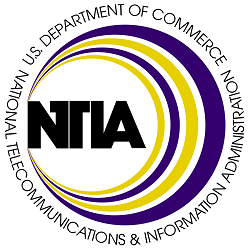
The states that are now in the process of completing their Initial Proposals include: Delaware, Kansas, Louisiana, Montana, Ohio, Tennessee, Vermont, Virginia and Wyoming.
Today, we will look at two states (Maine and Louisiana) and follow up with the others as we are getting a clearer picture of how each state intends to put this historic infusion of federal funds to use.
Maine
In this week’s round-up of broadband news, we culled three stories we think are worth reading.
How Much is Fast Enough?
The first is a story from Ars Technica – FCC chair: Speed standard of 25Mbps down, 3Mbps up isn’t good enough anymore – written by veteran IT reporter Jon Brodkin.
For years now, broadband-for-all advocates have lamented the FCC’s minimum broadband speed standard of 25 Megabits per second (Mbps) download and 3 Mbps upload as being laughably antiquated. Indeed, it’s been almost three years since we made the case for Why 25/3 Broadband Is Not Sufficient, though it was outdated long before then.
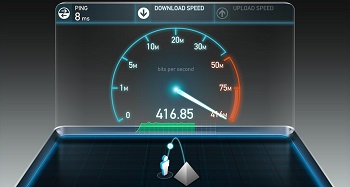
But as Brodkin reported this week, the FCC’s minimum speed standard “could finally change under Chairwoman Jessica Rosenworcel, who is proposing a fixed broadband standard of 100Mbps downloads and 20Mbps uploads along with a goal of bringing affordable service at those speeds to all Americans.”
Under Rosenworcel’s plan, the FCC would look at availability, speeds, and prices to determine whether the agency should take regulatory actions under Section 706 of the Telecommunications Act, which requires the FCC to determine if high-speed Internet access is being deployed "on a reasonable and timely basis" to all Americans.
Now that there’s broad consensus high-speed Internet connectivity should be universally accessible, there’s no shortage of broadband news/content floating around out there.
There’s the wheat (more truthful, useful, and informative stuff); the chafe (a mundane grain of truth buried under a steaming pile of bs), and a vast spectrum of perspectives in between.
In this new space we will highlight insightful news stories, blog posts, podcasts, or videos we’ve come across over the past week or so – with an eye to separate the signal from the noise.
Downloading now …
What Happened to Gigi?
While the FCC has been defanged in many ways, the agency is still at the center of our shared telecommunication ecosystem. So when President Biden nominated Gigi Sohn to serve as the fifth and final commissioner to break the 2-2 partisan deadlock at the agency, numerous consumer and public interest groups were ecstatic. The nation’s telecommunication workers backed her nomination. She even had the respect and quiet support of a number of conservative lawmakers.
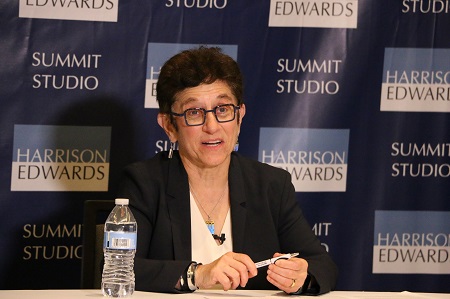
But her nomination was sunk by a vicious smear campaign, which led her to withdraw herself from consideration in March.
At the Broadband Communities Summit in May she described the process both like being put in a “washing machine full of rocks” and going through “a 16 month proctology exam.”
It was a big week for ECFiber as Vermont’s first – and oldest – Communication Union District (CUD) celebrated lighting up the last hub of its 1,500 mile-network in White River Junction.
To mark the occasion of connecting the “golden patch cord” that will extend high-speed Internet service to eight more communities in the Upper Valley region, White River Junction’s VFW Hall was packed this past Tuesday with CUD officials, local and state leaders, enthusiastic residents, and U.S. Sen. Peter Welch. They were there to celebrate what ECFiber officials liken to “the Golden Spike moment tying the first transcontinental railroad together.”
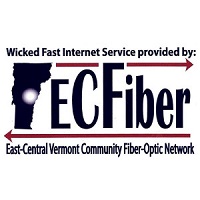
After a 30-piece band played marching tunes, ECFiber Chairman F.X. Flinn marched to the podium to describe the meaning of the moment.
"It’s come to fruition today with a lighting of the White River Junction hub," he said. "This is the last piece of the puzzle for the network we originally envisioned that would bring world-class broadband to every home and business in the 23 member towns that originally voted town meeting day 2008 to create ECFiber."
Sen. Welch, an ECFiber subscriber who also spoke at the event, credited the state’s community broadband approach as the linchpin to solving the state’s digital divide:
“If we in rural Vermont were going to depend on the big telecommunication companies to wire our homes and get us Internet, we’d be waiting until our grandchildren had grandchildren. It wasn’t going to happen.”
Eight More Towns Join CUD
Suwannee Valley Electric Cooperative (SVEC) has begun construction on an ambitious new fiber deployment that will soon bring affordable, multi-gigabit fiber access to all of the cooperative’s existing electrical customers in rural Northern Florida.
Cooperative officials tell ILSR its three-phase build out is well underway, with a beta anticipated this summer and the first commercial customers connected by August. SVEC Communications Director Jon Little says the cooperative’s goal remains to deliver affordable fiber to all 20,000 of the cooperative's current electric customers by the end of 2026.
“We’ve broken our territory into three phases based partly on population or possible customers,” Little said.
The cooperative’s recently created subsidiary, Rapid Fiber Internet, will interface directly with subscribers, while Conexon manages deployment of more than 4,100 miles of fiber. Electrical users won’t see price hikes; the projected $93 million deployment cost will be funded by a combination of grants and loans paid back exclusively through user subscriptions.

Little told ISLR that make ready (preparing utility poles for fiber attachments) prep and engineering for phase one are complete, and make ready construction for phase one is roughly 40 percent complete. He added that primary fiber construction for phase one is roughly twenty percent complete.
“We’re hoping that we will have a group of beta customers starting next month,” Little said. “We want to go about a month to get their feedback, and so we’re still hoping sometime in August to offer hookups to our members on that first feeder.”